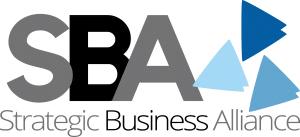How to Reduce Key Person Dependencies in Organisations Aug 20, 2018
“Key person dependencies are often present in teams big or small and such dependencies are often a serious risk to business processes.”
Who is a Key Person
A key person is generally a team member with critical knowledge of a business process and generally have been with the organisation for a long time and is an expert in his/her area of work and have deep knowledge of tools and technologies required to undertake their work processes.
A key person is generally the go-to person for the particular process and is the office ‘guru’ for all questions on that particular process.
A key person may not necessarily be part of the leadership group or management team within the organisation.
What is Key Person Dependency
A key person dependency generally exists if no one else in the organisation has knowledge of the process to an extent where they can effectively replace the key person.
This knowledge that the key person has maybe a critical knowledge i.e it is some type of a competitive advantage for the organisation, or the key in retaining a client or performing a process.

Critical knowledge is different from organic knowledge that is a result of the accumulated experience of the person that is often ‘in the person’s head’ and allows the key person to have an optimal response to a problem because of their accumulated knowledge of how to resolve the issue.
Risks from Key Person Dependency
Risks from Key Person Dependency may range from slow down or disruption to a business process if the key person is sick or leaves the organisation to financial loss or reputational loss due to disruption of client processes.
Risk Management Strategies to Reduce Key Person Dependencies
There are various core strategies that can be deployed to reduce key person dependencies. These include the following:
Create a Knowledge Map: Create a knowledge map within the organisation to document ‘who knows what’. This is an essential first step to creating a structure where there is awareness and identification of concentration of knowledge or key person dependencies.
Process Map Key Processes: Key person dependencies can be reduced by documenting and process mapping key processes to ensure accumulated knowledge of key persons is well distributed across the organisation.
Undertake Regular and Systemised Training on Key Processes: While process mapping allows an organisation to undertake knowledge management, training of other staff in the key processes is essential to ensure effective transfer of knowledge from the key person to other staff.
Use outsourcing to reduce key person risks: Along with training staff, utilising outsourcing to reduce key person risks can also achieve effective risk management. The outsourcing team will have experts who can adopt the key processes quicker and also provide an ‘on-tap’ resourcing option to reduce key person dependencies.
Outsourcing a key process would also mean documenting the process for the outsourcer which also achieves the aim of ensuring key process are documented.
Reduce Knowledge Transfer Anxiety: There might be anxiety on part of the key person to enable a knowledge transfer out of concern in losing one’s value or importance to the organisation or about job security concerns.

It is important to have an effective strategy to ensure that the key person is on-board to enable a knowledge transfer based on a transparent understanding of why such a knowledge transfer is required for effective risk management in processes.
Summary
Key person risks exist in all organisations and often the impact of key person dependencies is not felt till the key person leaves the organisation. Effective planning to reduce key person dependencies is imperative to avoid disruption to business processes and impediments to business growth.
